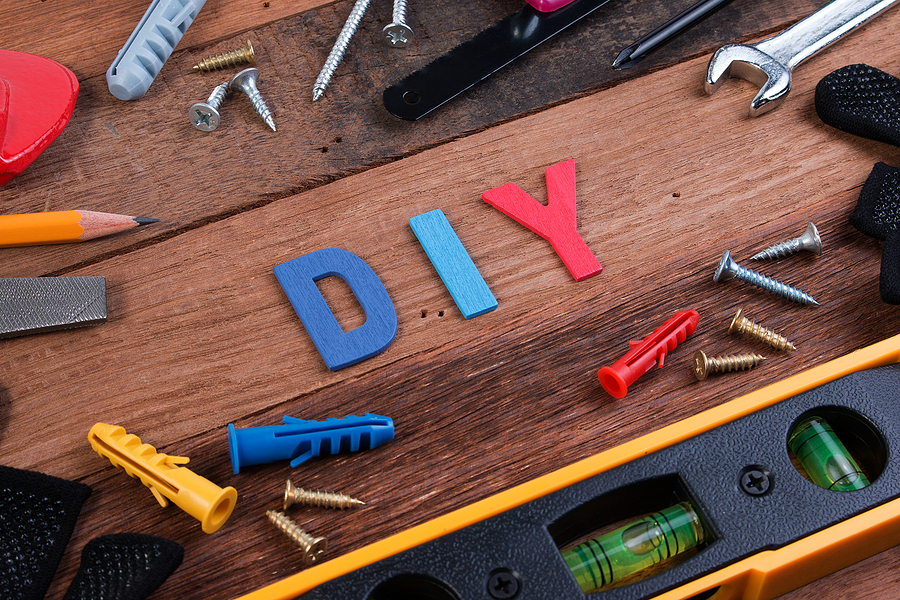Posted by Sandpaper America on Jul 12th 2024
The Role of Sandpaper in Successful DIY Projects
If you've ever taken on a DIY project, you know the thrill of transforming raw materials into something beautiful and functional. But how often do you think about sandpaper's role in your success? This unsung hero of the DIY world is crucial for achieving professional-quality results. In this blog, we'll explore why sandpaper is indispensable, how to choose the right grit, and tips for sanding effectively.

Why Sandpaper is a DIY Essential
Sandpaper may seem like a minor component in your toolkit, but it plays a vital role in many projects. It prepares surfaces, smooths rough edges, and ensures that your finishes look flawless. Whether you're refinishing furniture or crafting a wooden masterpiece, sanding is a step you can't afford to skip.
Understanding Sandpaper Grit
Not all sandpaper is created equal. The grit number indicates the coarseness of the sandpaper, with lower numbers being coarser and higher numbers being finer. Coarse grits (40-60) are great for removing material quickly, while medium grits (80-120) smooth out surfaces. Fine grits (150-220) prepare surfaces for finishing, and extra-fine grits (240-400) are perfect for polishing.
Types of Sandpaper and Their Uses
Different materials require different types of sandpaper. Aluminum oxide is versatile and durable, making it ideal for wood and metal projects. Garnet sandpaper is excellent for fine woodworking, while silicon carbide is perfect for sanding hard surfaces like glass or stone. Knowing which type to use can make a significant difference in your project's outcome.
How to Choose the Right Sandpaper for Your Project
Selecting the right sandpaper involves more than just picking a grit number. Consider the material you're working with and the stage of your project. Coarse grit is excellent for initial shaping, while medium grit smooths out rough patches. Fine grit prepares the surface for finishing, and extra-fine grit gives it a polished look.
Tips and Techniques for Effective Sanding
Sanding may seem straightforward, but there are techniques to make it more efficient. Always sand in the direction of the grain to avoid scratches. Use a sanding block for even pressure and better control. Don't rush; take your time to achieve a smooth, even surface. These tips can save you time and improve your results.
Common Sanding Mistakes to Avoid
Even experienced DIYers make sanding mistakes. One common error is not changing sandpaper frequently enough. Worn sandpaper is less effective and can damage your project. Another mistake is applying too much pressure, which can gouge the material. Finally, skipping grits can lead to an uneven finish, so always progress through the grits methodically.
Sandpaper's Role in Woodworking
For woodworking enthusiasts, sandpaper is indispensable. It helps shape and smooth wooden pieces, preparing them for staining or painting. Proper sanding enhances the wood's natural beauty and ensures that your finishes adhere correctly. Without it, your woodworking projects may lack the professional touch you're aiming for, like raised grain or inconsistent texture.
Sanding in Home Renovation
In home renovation projects, sandpaper is often overlooked but essential. It prepares walls for painting, smooths out plaster, and refines edges on trim and molding. Whether you're remodeling a room or refinishing cabinetry, sanding is a step that ensures your efforts look polished and professional.
The Science Behind Sandpaper
Sandpaper works by using abrasive particles to remove material from a surface. These particles are usually bonded to a paper or fabric backing and come in various sizes (grits). The friction generated by rubbing sandpaper against a material causes tiny abrasions, smoothing out rough spots and preparing surfaces for finishing.
The Environmental Impact of Sandpaper
While sandpaper is essential for many projects, it's important to consider its environmental impact. Some sandpaper products are made from renewable resources and biodegradable materials. Opt for eco-friendly options when possible, and always dispose of used sandpaper responsibly.
Choosing the Best Sandpaper Brands
Not all sandpaper brands are equal. High-quality sandpaper lasts longer and delivers better results. Brands like 3M, Norton, and Mirka are known for their durability and effectiveness. Investing in high quality sandpaper can save you time and money in the long run, as you'll need fewer sheets and achieve better finishes.
Conclusion
Sandpaper is a small but mighty tool in any DIY enthusiast's toolkit. It prepares surfaces, smooths rough edges, and ensures that your finishes look flawless. By understanding the different types of sandpaper, their uses, and how to choose the right grit, you can elevate your DIY projects to a professional level. Remember to avoid common mistakes, and consider the environmental impact of your choices. Ready to tackle your next project? Contact our sandpaper company for custom orders and expert advice tailored to your needs.
Ready to take the next step in your DIY journey? Contact Sandpaper America at 1-800-860-7263 (SAND) to order from a wide variety of sandpaper products for woodworking and home improvement in Indiana. Call to place an over-the-phone order or go online and buy directly from our website!
Related Posts:
A
Comprehensive Comparison: Different Types of Sanding Sheets and Their Uses
The
Essential Guide to Choosing and Using Sandpaper
What
Does a Wood Sanding the Sequence Mean?

